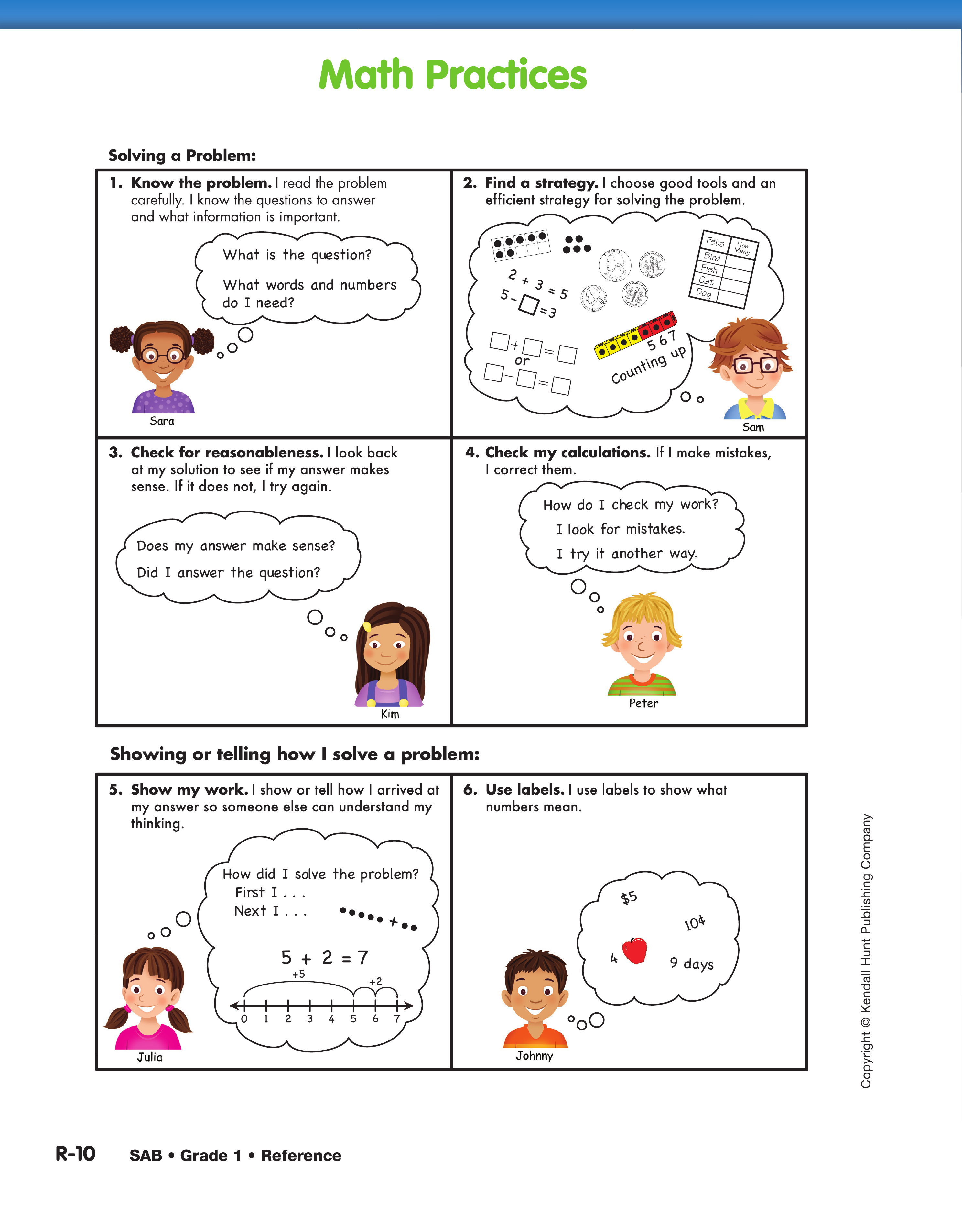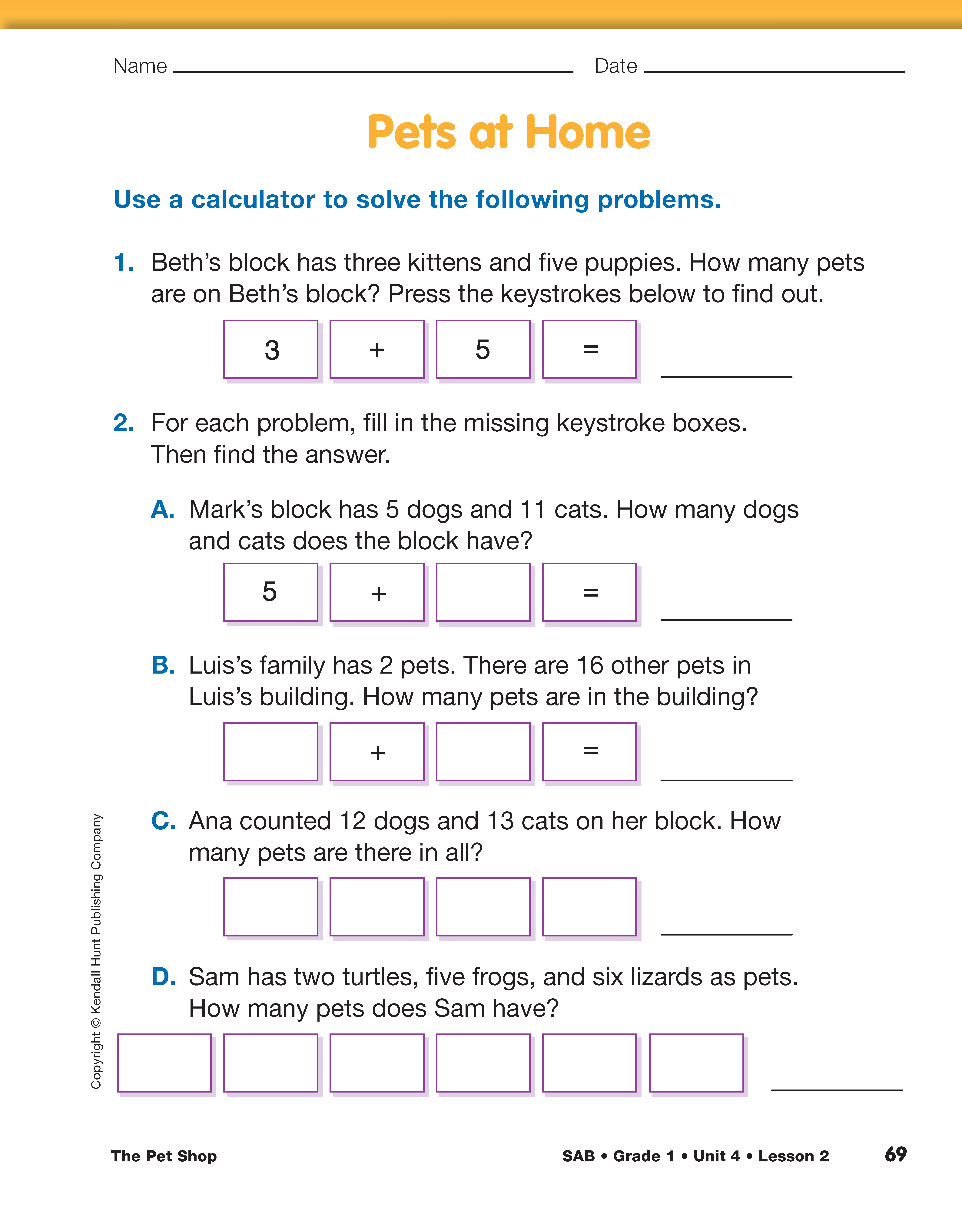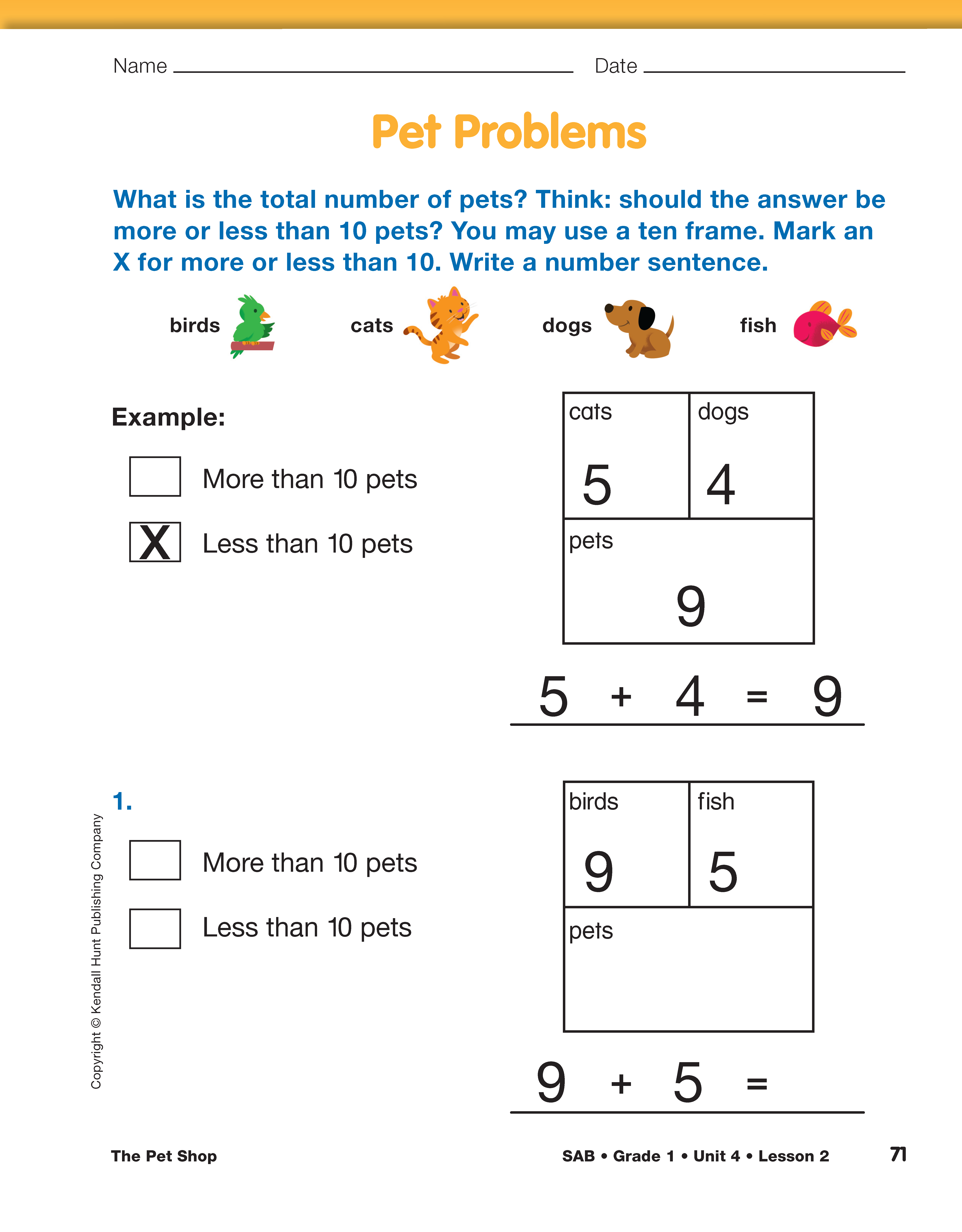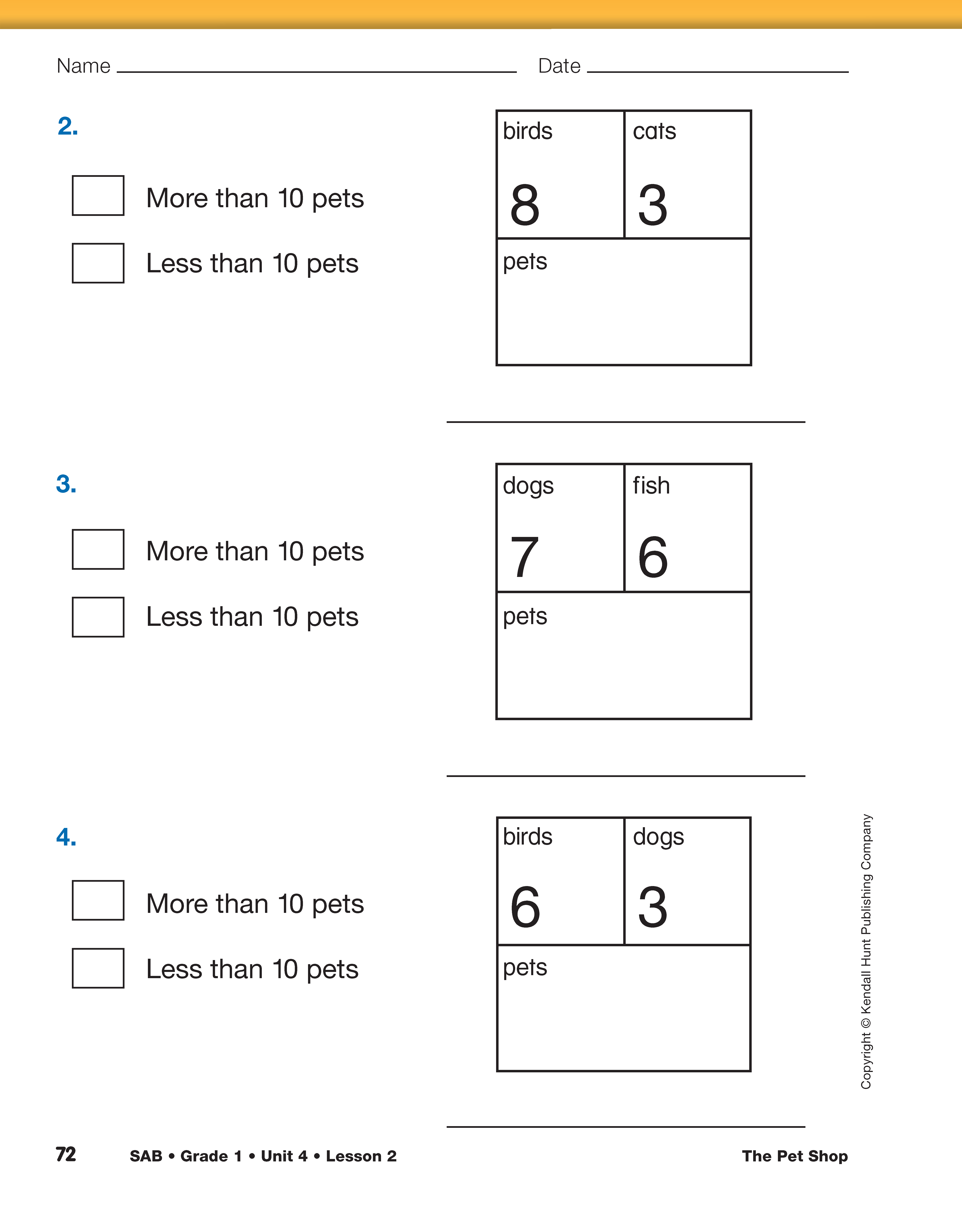The Pet Shop
Est. Class Sessions: 2Developing the Lesson
Part 2: Using Calculators
Introduce the Calculator. Display the Math Practices page from the Student Activity Book Reference section. Remind students that it is important to choose good tools for solving problems [MPE2]. Explain that calculators are tools that can help with mathematics. They are tools that students can use to check their calculations and to see if their answers to problems are reasonable. Remind students that these are also important Math Practices [MPE4, MPE3]. Refer again to the story problem where Mark wants to buy four bunnies, three lizards, and six kittens. Display the following keystrokes:

Explain that to solve this problem, students could press these keystrokes on the calculator. Help students connect the keystrokes pressed to the numbers they represent in the story.
Ask:
Emphasize to students that the calculator will compute the total and display a number that makes the number sentence true. Both sides of the equal sign in the equation will result in the same amount. Some calculators have an equal sign that locks in the constant meaning each time the equal key is pressed, the calculator will perform the last operation. Therefore, it is important to emphasize that students should hit the equal key only once. If they happen to press the following keys:

then the calculator will give them the wrong answer. If students list the correct keystrokes and the answer is incorrect, they might have pressed the equal key more than once. Students may ask what to do if they press a wrong button. For now, tell students to clear the calculator or turn it off and on again to start over.
Use Calculators to Solve Problems. Distribute calculators and ask students to turn them on. Display problem 13 + 6 =.
Ask:
Have students use the calculator to solve the problem. Complete the problems on the Pets at Home page together by assisting students in reading the problems. The intention is to give students the experience of reading keystrokes and then pressing them. Help them write the keystrokes in the boxes on the page as needed. As students become more comfortable with the calculator, encourage them to independently write the keystrokes used to find each sum.
Estimate Sums.
Ask:
Have students share their estimation and solution strategies. If someone doesn't suggest it, encourage students to think about a ten frame when estimating. Show students how 5 dogs would fill the top row and 3 cats would fill only part of the second row, so the total is less than 10. Other students may reason that 5 plus 5 makes ten, and since 3 is less than 5, the answer will be less than 10. Students should decide whether their answers are reasonable based on their estimation of a sum greater than or less than ten. See Content Note.
Direct students' attention to the Pet Problems pages. The pages feature a part-whole diagram. Complete the first problem together, then assign the remaining problems to student pairs. Partners decide if the answers should be more than ten or less than ten. Then one partner solves the problem choosing any of the available tools, except a calculator, including connecting cubes, number line, ten frames, and counters, and writes a number sentence. The other partner solves the problem using a calculator. Partners compare answers and agree on a correct solution. Finally, students should look back at their estimate and decide if their answer is reasonable. Partners should take turns using the calculator and solving the problems.


















